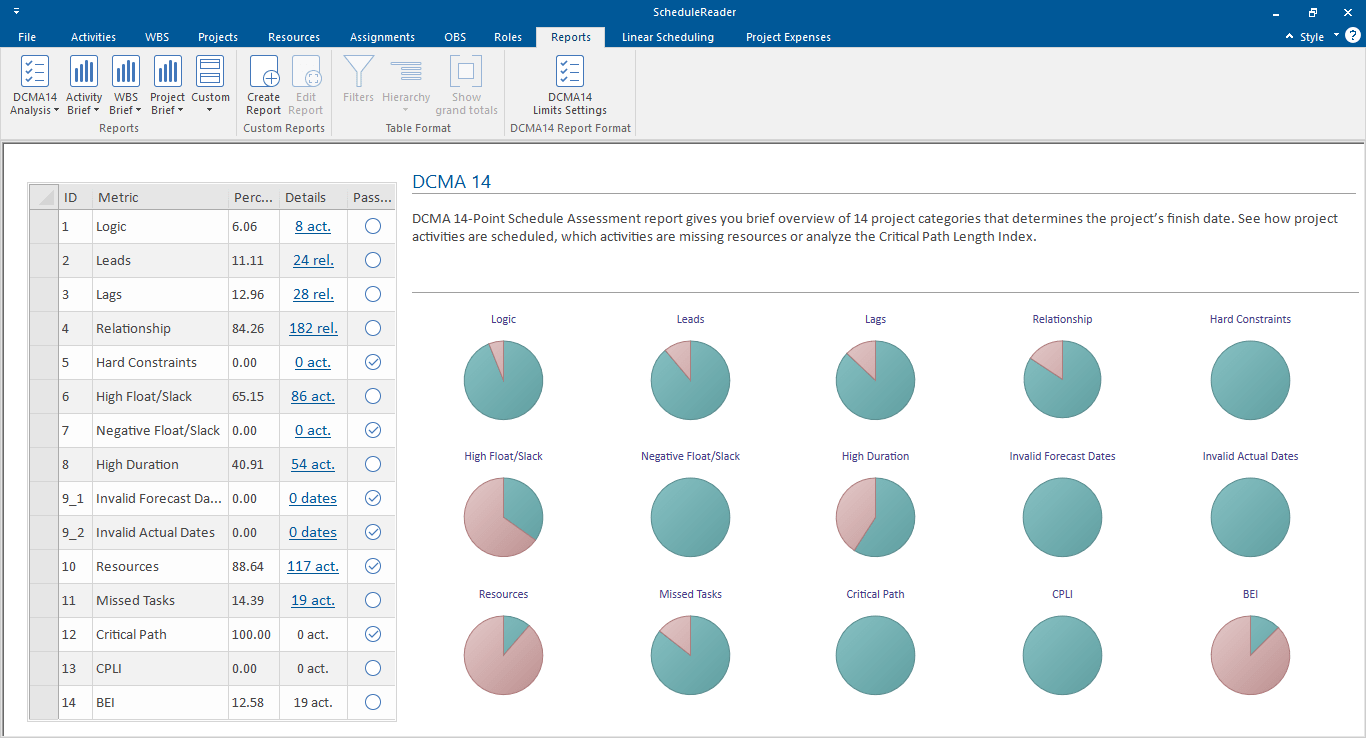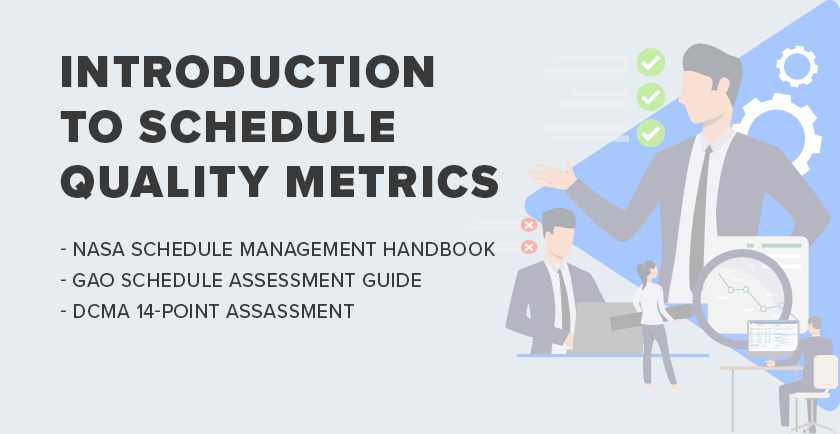Schedule quality assessment metrics are utilized in a variety of industries, especially in the aerospace and government sectors. For years schedule metrics have been used in conjunction with Earned Value Management (EVM) methodologies to determine and evaluate schedule risk and recovery patterns.
The purpose of this article is to demystify some of the most popular and proven schedule quality assessment metrics and guidelines used throughout the industries that have implemented them as basic staples for project management and schedule health indicators.
NASA Schedule Management Handbook
The NASA Schedule Management Handbook’s prime mission is to establish a foundation for planning and scheduling the work necessary to deliver products on time and within budget. The NASA Schedule Management Handbook outlines in detail project management and schedule management processes and methodologies specific to the National Aeronautics and Space Administration (NASA).
It is used as a guide or a “how-to” for developing the project schedule while honoring the full life cycle with NASA-specific guidelines and policies. Due to its direct correlation to NASA’s way of conducting business, the handbook is utilized specifically for NASA schedule management and reporting. For example, the NASA Schedule Management Handbook contains the scheduling best practices for vertical and horizontal schedule integration and traceability.
The NASA Schedule Management Handbook is tailored specifically for NASA headquarters, centers, and contractors. The prime interest is in the NASA schedule requirements and techniques.
It is important to note that NASA and its entities do not necessarily require resource-loaded schedules; however, the NASA Schedule Management Handbook does stress the importance and viability of producing resource-loaded schedules. In many cases, resources and costs are managed externally through a different platform outside the scheduling tool.
GAO Schedule Assessment Guide
The United States Government Accountability Office (GAO), similar to NASA, is responsible for ensuring schedule quality and methodologies. However, the best practices guide encompasses the general U. S. government oversight in consideration of its use of public funds.
As with the NASA Schedule Management Handbook, the GAO Schedule Assessment Guide is the scheduling counterpart that captures scheduling best practices and methodologies. The GAO Schedule Assessment Guide is also accompanied by the GAO Cost Estimating and Assessment Guide to develop, manage, and sustain reliable cost estimates through the full life cycle of a program.
Just as the NASA Schedule Management Handbook strives for high-quality, reliable, and accurate schedules, the GAO Schedule Assessment Guide strives for the same mission for the U.S. government. In addition, the GAO Schedule Assessment Guide specifically references the Defense Contract Management Association 14 Point Assessment.
DCMA 14-Point Schedule Quality Assessment
This assessment is a strict and pre-defined set of measurements that determine overall project schedule quality, integrity, and health. Measuring stick such as this is referenced and utilized by the GAO, although this schedule quality assessment itself possesses visible differences in comparison to the GAO.
For example, this 14 point schedule quality assessment report concentrates on contractor adherence to the project schedule and contractual deliverables. As such, it does not require a Schedule Risk Assessment (SRA) for its schedules, but rather, resource loading if it is contained in the scope and contract.
To further understand the 14 metrics, you may refer to the insightful article on the ScheduleReader blog: DCMA 14 Point Assessment – Project Schedule Quality Analysis.
Both the NASA Schedule Management Handbook and the GAO Schedule Assessment Guide can be considered similar, yet different quality guidelines for different entities and the DCMA 14-Point Assessment can be considered the true guideline for the schedule analysis itself.
The former two examples are guidelines to develop and maintain effective schedules, while the third t is the quality metric used to report project integrity and health throughout the project’s life cycle.
A complete DCMA 14 point assessment on existing XER and XML schedules can also be quite easily performed with the ScheduleReader software.

ScheduleReader is Windows-friendly and offers an inexpensive licensing alternative to standard scheduling tools such as Primavera P6 for large project teams that do not have full access to Primavera P6 to be able to view and analyze the project schedules in XER format.
Thus report is already built into the ScheduleReader PRO version, thus providing report access to large teams and schedulers who can use the reader alongside their P6 tool to analyze the data.
For more information on this useful feature, visit this help guide at the ScheduleReader website.
About the Author
Melanie Calverley is an experienced professional with several years of knowledge and practice in Project Management as a Program Cost and Schedule Control Analyst on multi-million/multi-billion-dollar projects, Project Controls, Strategic Planning, Engineering Planning, Earned Value Management (EVM), and Earned Value Management System (EVMS) implementation, Configuration Management, and writing/editing. She commands full utilization of Primavera P6 software, MS Project, and MS Project Server. Her career background includes industry experience in oil and gas, energy, aerospace/defense, IT, litigation, and media.
Calverley has extensive experience in the planning and scheduling arena since 1999, as well as extensive experience in the aerospace and oil and gas industries combined. Calverley has worked for the large and high-visibility players in the aerospace industry – Boeing and Lockheed Martin, as well as the large companies in the O&G industry, such as Schlumberger, GE Energy, and Chevron. She supported NASA directly and a host of smaller sub-contractors over the years before exploring the O&G and IT industries. Calverley understands the strict, organized flow of the aerospace industry’s horizontal and vertical logic integration, the criticality of resource loading, and the reporting functions that support Earned Value Management (EVM). She has also participated in various audits such as DCMA audits, JSRs, ISRs, and CAM reviews. In 2013, Calverley was responsible for implementing a full EVMS in Primavera for Cameron International’s (now Schlumberger) Process Systems Division across the globe. The system was fully tested and successfully implemented and run in the United States, Brazil, the UK, Malaysia, Singapore, and the Middle East.
Calverley owns her own business, Calverley Consulting, LLC, which has been operational since 2017. Calverley is also a solid writer, editor, and process flow documentation expert. She possesses a full command of the proper English language, and she is also a published book author. Calverley developed and championed multiple process flows and written documentation via policies and procedures for various well-known companies.

